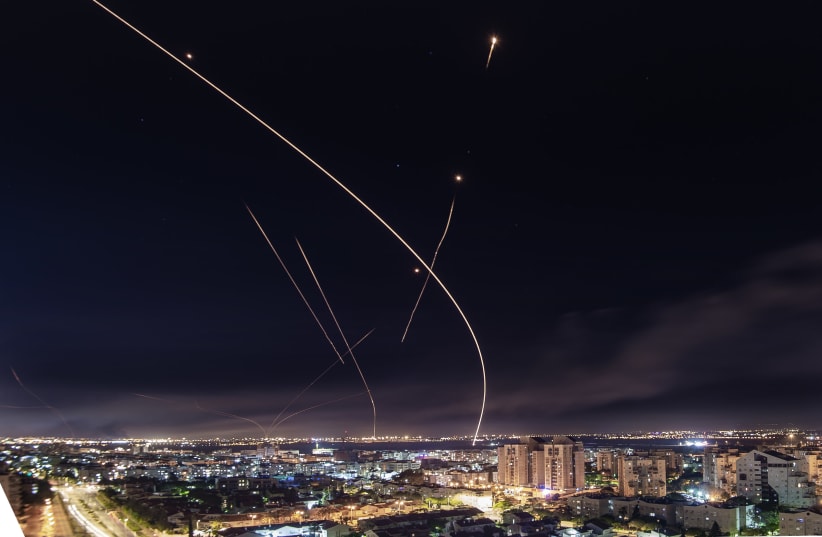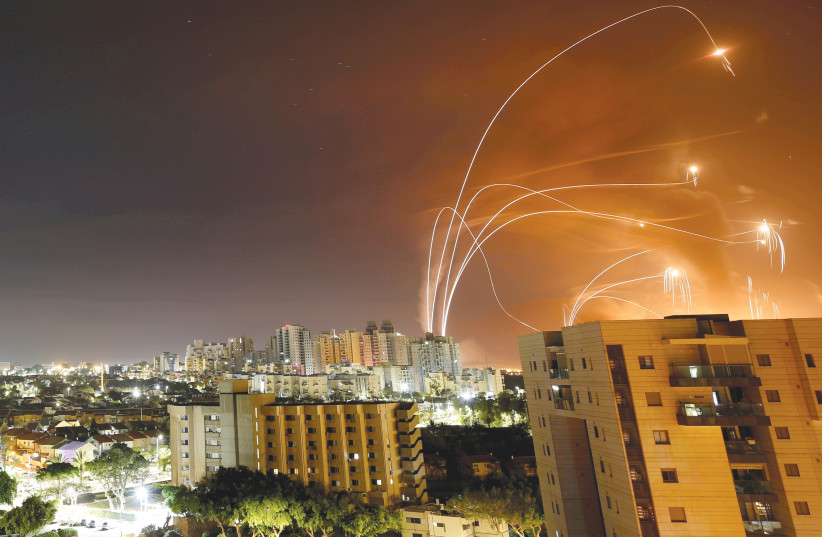When people ask Nechama Greenfield why she and her husband chose to move just nine miles from Gaza in June, less than a month after Israel’s latest conflict with Hamas, she usually jokes that they were looking for a little excitement.
But the potential for dark humor isn’t what drew her to Ashkelon, a burgeoning Israeli city that was bombarded with hundreds of rockets from the coastal strip earlier this year, killing two people. Greenfield, a retired physiotherapist with two sons in Israel, says her family appreciates Ashkelon’s communal feel. And she isn’t fazed by the prospect of violence, which poses a risk of some kind to almost every part of the country.
“We lived through 9/11 and my husband was in the city that day,” she said. “I’ve been to Israel many times and I always felt safer here than in the US There is fear, of course, but the reality is that up north, there is Lebanon… and just last night there was a shooting in Jerusalem.”
That attitude is common among Ashkelon’s English-speaking immigrants, whose numbers appear to be slowly growing despite the violence. When Rabbi Matt Futterman, who used to lead Ashkelon’s Conservative synagogue, arrived in 1986, he estimated that the city had only a few dozen English-speaking immigrants, referred to in Israel collectively as “Anglos.” Thirty-five years later, that number has risen to around 500, according to Stephen Epstein, who moved here a year and a half ago and has since tried to recruit more Anglos to the city.
Ashkelon still isn’t a main draw for the thousands of Americans who move to Israel each year. Just 75 Americans have moved from the US to Ashkelon since 2017, according to statistics from Nefesh B’Nefesh, a nonprofit that manages American immigration to Israel. That’s compared to more than 1,000 American immigrants, in total, who have moved in the same period to the central Israeli cities of Ra'anana and Modi'in — both of which have historically been popular with Anglos. The statistics do not include American immigrants who have moved to Ashkelon from another city in Israel.
To the Anglos living in Ashkelon, the intimacy of the city’s English-speaking community is part of its appeal. After serving at the Conservative synagogue’s pulpit, Futterman and his wife decided to move back to the US to care for aging parents. But when it came time to retire, they returned to Ashkelon.
Their commitment to the city was tested in May, when a missile shot from the Gaza Strip slammed into the building directly behind theirs, killing Soumya Santosh, 32, a caregiver from India. Later that day Nella Gurevitz, 52, was killed in a separate rocket attack on the city. The Futtermans spent that day running back and forth from their living room to the fortified room in their apartment, hoping that their building wasn’t next.
“We had a couple of scary moments,” Futterman says. “And once we heard that someone had been killed, and we saw the electricity was out, our kids insisted that we leave Ashkelon and go stay with them.”
They rode out the rest of the 11-day conflict at their daughters’ home in Mazkeret Batya, a small town in central Israel. But Futterman says that if his kids hadn’t insisted, he might not have left. And he still sings Ashkelon’s praises.
“The city is small and gorgeous, and you can get from one end to the other with no traffic,” he said. “There are good schools and good restaurants. A lot of English speakers are social workers, psychologists and teachers.”
The gradual flow of English-speaking immigrants has spawned multiple English-language Facebook groups for Ashkelon residents, as well as a community website in English. In recent years, more and more of the city’s restaurants have translated their menus to English.
“It’s for people who are drawn by the sea and also want an Anglo community,” Epstein said. “Because of COVID, many people are working from home and going into the office just once or twice a week.”
Immigrants aren’t the only ones moving into the city. Ashkelon’s overall population has exploded in recent years. When the Futtermans came in 1986, there were about 50,000 people living here. Today the population has tripled to nearly 150,000, making it Israel’s twelfth-largest city.
The population boom came in part due to the launch of a direct, hourlong train line between Ashkelon and Tel Aviv in 2013, which made the city more accessible to those who work in Israel’s economic capital but want less expensive housing. A three-bedroom apartment in Ashkelon costs less than half of what it would in Tel Aviv or Jerusalem.
Want more international stories in your inbox? Sign up for JTA’s Around the World newsletter.
In the years after Israel’s founding, large numbers of Mizrahi immigrants, or Jews with roots in the Middle East, settled in the city, and still make up the majority. But the city’s Anglo community also has a relatively deep history. Ashkelon was originally planned by members of the South African Jewish community as a garden city similar to those found in South Africa.
David Zwebner, a South African immigrant who is writing a book about Ashkelon and has become a real estate agent in the city, says the Jewish community in South Africa approached the nascent Israeli government with offers of financial help, and Golda Myerson (later Meir), told them to “design a city for us.”
Ashkelon’s South African legacy is evident in its large parks and streets, which are named for places like Capetown and Johannesburg. The city, more than others in Israel, is crisscrossed by wide roads with little traffic.
“Ashkelon is almost the same size as Tel Aviv, but with just one quarter of the population,” Epstein said. “The city has so many open green spaces that foxes roam some of the parks and empty lots at night.”
Zwebner said real estate prices are rising rapidly despite the rocket fire, nearly all of which is intercepted by Israel’s Iron Dome missile defense system. In the building where he’s selling units, two years ago four-bedroom apartments were going for about $420,000. Today they have jumped to $750,000.
But Greenfield feels like Ashkelon has still retained its homey feel. Five months after arriving, she has joined a craft group and a women’s walking group. Neighbors have been friendly, inviting them for Shabbat meals.
“Everyone has been incredibly kind,” she says. “Even the people in the bank. Even in the supermarket. They have just gone above and beyond what could be expected.”

